| Graphic Organizers: Lists |
|---|
| www.studenthandouts.com > Graphic Organizers > Graphic Organizers: Lists |
 | 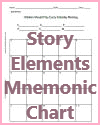 |  | 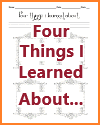 | 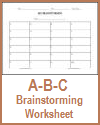 | ||||||
| Brainstorming Explosion Worksheet | Story Elements Mnemonic Chart | Blank Scroll Writing Sheet | Four Things I Learned About | ABC Brainstorming Worksheet |
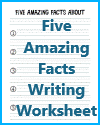 |  | 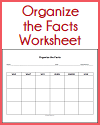 | 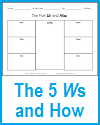 | 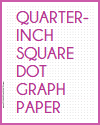 | ||||||
| Five Amazing Facts About | Brainstorming Thought Bubbles Worksheet | Organize-the-Facts Worksheet | The Five Ws and How Worksheet | Quarter-inch Square Dot Graph Paper |
 | 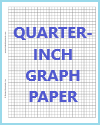 | 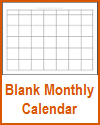 | ||||||||
| College and High School Course Assignment Planner | Quarter-inch Graph Paper | Blank Monthly Calendar |
Lists and list creation can be highly beneficial to the learning process for several reasons.
 Organization: Lists provide a structured and organized way to present information. They help learners break down complex topics or tasks into smaller, manageable components. This organization makes it easier for learners to grasp the content and see the relationships between different items.
Organization: Lists provide a structured and organized way to present information. They help learners break down complex topics or tasks into smaller, manageable components. This organization makes it easier for learners to grasp the content and see the relationships between different items. Clarity: Lists enhance clarity and readability. They present information in a concise and easy-to-follow format, reducing the cognitive load on learners. This clarity is especially valuable when presenting step-by-step instructions or summarizing key points. Prioritization: Lists allow learners to prioritize and focus on important information. By numbering or ordering items in a list, educators or learners can highlight the most critical concepts, tasks, or steps, helping individuals allocate their time and attention effectively. Memory Aid: Lists can serve as memory aids. When learners create lists or review existing ones, they reinforce their memory of the content. The act of writing or mentally recalling items on a list can enhance retention and recall. Effective Note-Taking: Lists are valuable tools for note-taking during lectures, readings, or discussions. They enable learners to capture key points, main ideas, or a series of related concepts in a concise format. This makes reviewing and studying notes more efficient. Visual Representation: Lists provide a visual representation of information, making it easier for visual learners to comprehend and remember content. The format itself can aid in understanding relationships and hierarchies between items. Task Management: Lists are commonly used for task management and to-do lists. They help learners organize their assignments, deadlines, and priorities. This practice can reduce stress and increase productivity. Problem-Solving: When faced with complex problems or decision-making tasks, creating lists of pros and cons, potential solutions, or criteria can help learners systematically analyze the situation and arrive at informed decisions. Summarization: Lists are effective tools for summarizing longer texts, presentations, or lectures. By distilling information into a list format, learners can condense content while retaining its essential points. Self-Assessment: Lists can be used for self-assessment and self-directed learning. Learners can create checklists to track their progress, identify areas where they need improvement, and set goals for their learning journey. Collaboration: Lists can facilitate collaboration in group projects. When working with others, lists can help team members allocate tasks, set objectives, and monitor progress. Creative Expression: Lists can be a creative outlet for learners. They can be used to generate ideas, brainstorm, or create lists of personal preferences, interests, or goals. Time Management: Lists can aid in time management by helping learners plan their schedules, prioritize tasks, and allocate time to different activities or subjects. Lists and list creation are versatile tools that support various aspects of the learning process, including organization, comprehension, memory retention, task management, and problem-solving. They can be adapted to suit different learning styles and preferences, making them valuable aids in both formal and informal learning environments. |
|---|
| www.studenthandouts.com > Graphic Organizers > Graphic Organizers: Lists |






